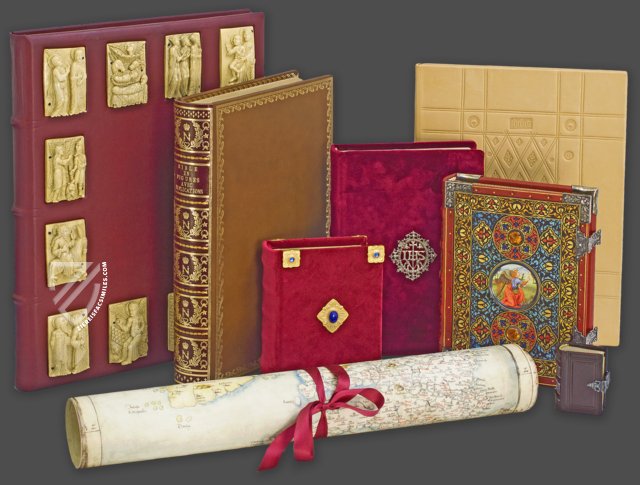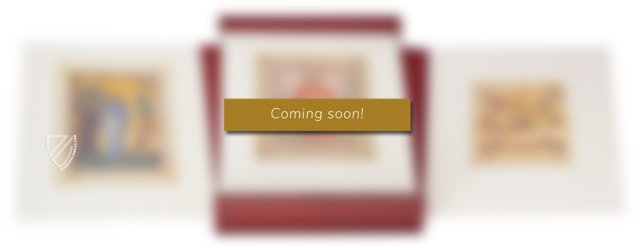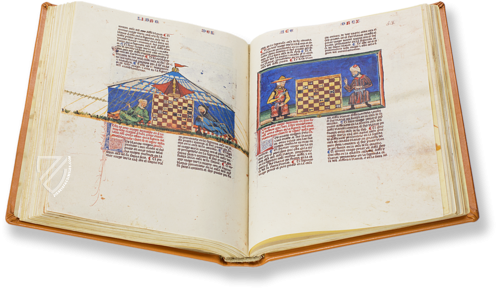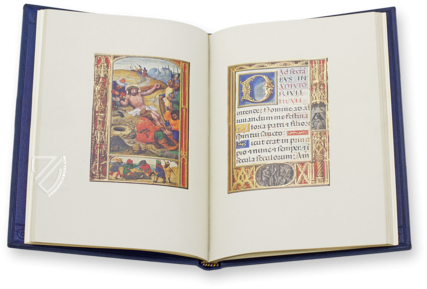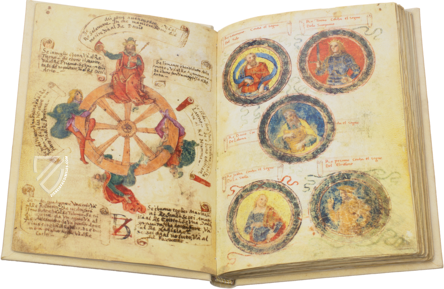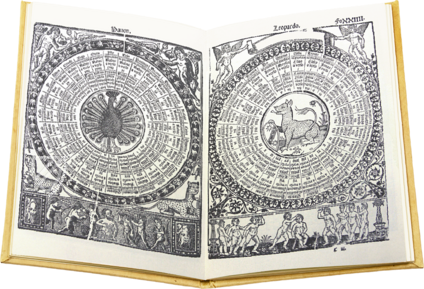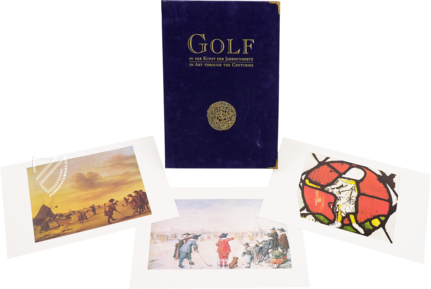The Key Documents of the Early History of Golf (Collection)
(1,000€ - 3,000€)
This collection of documents traces the evolution of the game of golf from the 15th to the 19th centuries. It includes medieval bans on golf, rule for playing the game, records of purchases and patents, and more. Many of the documents are associated with the Sottish monarchy, and the collection also represents an inside view of Scottish society during this time. This is a unique, fascinating, and comprehensive collection on the history of the game and a treasure for modern gold lovers.
The Key Documents of the Early History of Golf (Collection)
This is a carefully-selected group of crucial documents concerning the history of the popular modern pastime that reaches back to the 15th century. The oldest document is a ban on golf issued in 1457 by King James II of Scotland (1430–60), and the most recent is a map of Edinburgh and Leith Links from 1804. Other documents attest to a change in heart by the Scottish monarchs in following generations and include records from the Lord High Treasurer of Scotland for the purchase of golf balls and clubs in 1506 by King James IV (1473–1513) and a patent for making balls granted to James Melville by King James VI (1556–1625). These documents allow one to follow the evolution of the game of golf from its origins in the Middle Ages to the emergence of its modern form and also provides a glimpse into Scottish society between the 15th and 19th centuries.
The Diary of Thomas Kincaid
One of the most interesting documents included in this publication is the Diary of Thomas Kincaid. The son of a surgeon, Kincaid studied medicine in Edinburgh in the mid–1680’s. All entries in his diary date from January 1687 to December 1688; however, this is not an ordinary journal of social engagements. Rather, Thomas seems to meditate on a wide range of subjects, archery and golf among them. As an expert archer, he won the Silver Arrow in 1711. His interest in golf goes further than the simple practice of the game. Kincaid’s observations and study of the swing covers aspects such as, ball and body positions, rhythm and even the plane of the swing. These instructions are considered to be the oldest in golf history. Clubs repairs, golf ball improvements and his thoughts on what appears to be an early concept of a handicap system, are others of his favorite subjects of meditation.
The First Open Competition
The competition for the Silver Club was the first open competition ever played and was to be open to “Noblemen or Gentle- men, or other golfers, from any part of Great Britain or Ireland”. Paying “Five Shilling Sterling” and recording their names in the eight days preceding the match “in a Book to be provided for that purpose, which is to lie in Mrs. Clephen’s house in Leith”. This ‘house’ was the tavern run by the widow of John Clephane, a noted club-maker, and was a popular gathering place for the Leith golfers. As with the Silver Arrow, the competition was to be announced throughout the town by the beating of a drum in procession to Leith Links. The victor of this competition was to be called the Captain of Golf. This is a privileged position with responsibility for the care of the links and he was also to be responsible for deciding all disputes regarding the rules of the game.
The Original Rules of Golf
The Articles and Laws of 1744 were drawn up specifically for the competition for the Silver Club. Although the rules were later subject to revisions, when the Society of St. Andrews Golfers was formed in 1754, apart from the final, local rule, they adopted the ‘Articles and Laws’ formulated by the Gentleman Golfers practically word for word. This indicates the high regard the St. Andrews Golfers, later the Royal and Ancient Golf Club, had for their Edinburgh counterparts. It also demonstrates that, in spite of the difficulties of communicating in mid–18th century Scotland, the leading golfers in different parts of Scotland knew each other and discussed the game of golf and how it should be played.
• Ban on Golf by King James II, 1457. National Archives of Scotland, PA 5/6.
• Ban on Golf by King James III, 1471. National Archives of Scotland, PA 2/1.
• Ban on Golf by King James IV, 1491. National Archives of Scotland, PA 2/5.
• Document of the Lord High Treasurer for Scotland, 1506. National Archives of Scotland, PA 2/5. February 22, 1506, E.21/7 fol. 129.
• Document of the Lord High Treasurer for Scotland, 1506. National Archives of Scotland, E. 21/7 fol. 141. July 22, 1506, E. 21/7 fol. 141.
• Letters of Licence to James Melville, 1618. National Archives of Scotland, PS I/87.
• The Diary of Thomas Kincaid, 1687–1688. National Library of Scotland, Adv. 32.7.7.
• Vocabula, 1713. National Library of Scotland, LC. 445 (2).
• The Letter of Alexander Monro, 1691. National Library of Scotland, Ms. 1393, folios 177–178. April 27, 1691, Ms. 1393, fol. 177–178.
• Port of Leith Collectors Book of Merchans, 1743. National Archives of Scotland, ES 22/1.
• The First Open Competition-The Silver Club Competition, 1744. Archives of the City of Edinburgh.
• The Original Rules of Golf, 1744. The Honourable Company of Edinburgh Golfers, ACC. 11208/2.
• Map of the City of Edinburgh and Leith Links, 1804. National Library of Scotland, EMS.s 365.
Codicology
- Alternative Titles
- Los Documentos Clave en la Historia del Golf
Wichtige Dokumente der frühen Geschichte des Golf - Date
- Mid 15th century – early 19th century
- Epochs
#1 Los Documentos Clave en la Historia del Golf
Languages: English, Spanish
(1,000€ - 3,000€)
- Treatises / Secular Books
- Apocalypses / Beatus
- Astronomy / Astrology
- Bestiaries
- Bibles / Gospels
- Chronicles / History / Law
- Geography / Maps
- Saints' Lives
- Islam / Oriental
- Judaism / Hebrew
- Single Leaf Collections
- Leonardo da Vinci
- Literature / Poetry
- Liturgical Manuscripts
- Medicine / Botany / Alchemy
- Music
- Mythology / Prophecies
- Psalters
- Other Religious Books
- Games / Hunting
- Private Devotion Books
- Other Genres
- Afghanistan
- Armenia
- Austria
- Belgium
- Belize
- Bosnia and Herzegovina
- China
- Colombia
- Costa Rica
- Croatia
- Cyprus
- Czech Republic
- Denmark
- Egypt
- El Salvador
- Ethiopia
- France
- Germany
- Greece
- Guatemala
- Honduras
- Hungary
- India
- Iran
- Iraq
- Israel
- Italy
- Japan
- Jordan
- Kazakhstan
- Kyrgyzstan
- Lebanon
- Liechtenstein
- Luxembourg
- Mexico
- Morocco
- Netherlands
- Palestine
- Panama
- Peru
- Poland
- Portugal
- Romania
- Russia
- Serbia
- Spain
- Sri Lanka
- Sweden
- Switzerland
- Syria
- Tajikistan
- Turkey
- Turkmenistan
- Ukraine
- United Kingdom
- United States
- Uzbekistan
- Vatican City
- A. Oosthoek, van Holkema & Warendorf
- Aboca Museum
- Ajuntament de Valencia
- Akademie Verlag
- Akademische Druck- u. Verlagsanstalt (ADEVA)
- Aldo Ausilio Editore - Bottega d’Erasmo
- Alecto Historical Editions
- Alkuin Verlag
- Almqvist & Wiksell
- Amilcare Pizzi
- Andreas & Andreas Verlagsbuchhandlung
- Archa 90
- Archiv Verlag
- Archivi Edizioni
- Arnold Verlag
- ARS
- Ars Magna
- ArtCodex
- AyN Ediciones
- Azimuth Editions
- Badenia Verlag
- Bärenreiter-Verlag
- Belser Verlag
- Belser Verlag / WK Wertkontor
- Benziger Verlag
- Bernardinum Wydawnictwo
- BiblioGemma
- Biblioteca Apostolica Vaticana (Vaticanstadt, Vaticanstadt)
- Bibliotheca Palatina Faksimile Verlag
- Bibliotheca Rara
- Boydell & Brewer
- Bramante Edizioni
- Bredius Genootschap
- Brepols Publishers
- British Library
- C. Weckesser
- Caixa Catalunya
- Canesi
- CAPSA, Ars Scriptoria
- Caratzas Brothers, Publishers
- Carus Verlag
- Casamassima Libri
- Centrum Cartographie Verlag GmbH
- Chavane Verlag
- Christian Brandstätter Verlag
- Circulo Cientifico
- Club Bibliófilo Versol
- Club du Livre
- CM Editores
- Collegium Graphicum
- Collezione Apocrifa Da Vinci
- Comissão Nacional para as Comemorações dos Descobrimentos Portugueses
- Coron Verlag
- Corvina
- CTHS
- D. S. Brewer
- Damon
- De Agostini/UTET
- De Nederlandsche Boekhandel
- De Schutter
- Deuschle & Stemmle
- Deutscher Verlag für Kunstwissenschaft
- DIAMM
- Droz
- E. Schreiber Graphische Kunstanstalten
- Ediciones Boreal
- Ediciones Grial
- Ediclube
- Edições Inapa
- Edilan
- Editalia
- Edition Deuschle
- Edition Georg Popp
- Edition Leipzig
- Edition Libri Illustri
- Editiones Reales Sitios S. L.
- Éditions de l'Oiseau Lyre
- Editions Medicina Rara
- Editorial Casariego
- Editorial Mintzoa
- Editrice Antenore
- Editrice Velar
- Edizioni Edison
- Egeria, S.L.
- Eikon Editores
- Electa
- Emery Walker Limited
- Enciclopèdia Catalana
- Eos-Verlag
- Ephesus Publishing
- Ernst Battenberg
- Eugrammia Press
- Extraordinary Editions
- Fackelverlag
- Facsimila Art & Edition
- Facsimile Editions Ltd.
- Facsimilia Art & Edition Ebert KG
- Faksimile Verlag
- Feuermann Verlag
- Folger Shakespeare Library
- Franco Cosimo Panini Editore
- Friedrich Wittig Verlag
- Fundación Hullera Vasco-Leonesa
- G. Braziller
- Gabriele Mazzotta Editore
- Gebr. Mann Verlag
- Gesellschaft für graphische Industrie
- Getty Research Institute
- Giovanni Domenico de Rossi
- Giunti Editore
- Graffiti
- Grafica European Center of Fine Arts
- Guido Pressler
- Guillermo Blazquez
- Gustav Kiepenheuer
- H. N. Abrams
- Harrassowitz
- Harvard University Press
- Helikon
- Hendrickson Publishers
- Henning Oppermann
- Herder Verlag
- Hes & De Graaf Publishers
- Hoepli
- Holbein-Verlag
- Houghton Library
- Hugo Schmidt Verlag
- Idion Verlag
- Il Bulino, edizioni d'arte
- ILte
- Imago
- Insel Verlag
- Insel-Verlag Anton Kippenberger
- Instituto de Estudios Altoaragoneses
- Instituto Nacional de Antropología e Historia
- Introligatornia Budnik Jerzy
- Istituto dell'Enciclopedia Italiana - Treccani
- Istituto Ellenico di Studi Bizantini e Postbizantini
- Istituto Geografico De Agostini
- Istituto Poligrafico e Zecca dello Stato
- Italarte Art Establishments
- Jan Thorbecke Verlag
- Johnson Reprint Corporation
- Josef Stocker
- Josef Stocker-Schmid
- Jugoslavija
- Karl W. Hiersemann
- Kasper Straube
- Kaydeda Ediciones
- Kindler Verlag / Coron Verlag
- Kodansha International Ltd.
- Konrad Kölbl Verlag
- Kurt Wolff Verlag
- La Liberia dello Stato
- La Linea Editrice
- La Meta Editore
- Lambert Schneider
- Landeskreditbank Baden-Württemberg
- Leo S. Olschki
- Les Incunables
- Liber Artis
- Library of Congress
- Libreria Musicale Italiana
- Lichtdruck
- Lito Immagine Editore
- Lumen Artis
- Lund Humphries
- M. Moleiro Editor
- Maison des Sciences de l'homme et de la société de Poitiers
- Manuscriptum
- Martinus Nijhoff
- Maruzen-Yushodo Co. Ltd.
- MASA
- Massada Publishers
- McGraw-Hill
- Metropolitan Museum of Art
- Militos
- Millennium Liber
- Müller & Schindler
- Nahar - Stavit
- Nahar and Steimatzky
- National Library of Wales
- Neri Pozza
- Nova Charta
- Oceanum Verlag
- Odeon
- Orbis Mediaevalis
- Orbis Pictus
- Österreichische Staatsdruckerei
- Oxford University Press
- Pageant Books
- Parzellers Buchverlag
- Patrimonio Ediciones
- Pattloch Verlag
- PIAF
- Pieper Verlag
- Plon-Nourrit et cie
- Poligrafiche Bolis
- Presses Universitaires de Strasbourg
- Prestel Verlag
- Princeton University Press
- Prisma Verlag
- Priuli & Verlucca, editori
- Pro Sport Verlag
- Propyläen Verlag
- Pytheas Books
- Quaternio Verlag Luzern
- Reales Sitios
- Recht-Verlag
- Reichert Verlag
- Reichsdruckerei
- Reprint Verlag
- Riehn & Reusch
- Roberto Vattori Editore
- Rosenkilde and Bagger
- Roxburghe Club
- Salerno Editrice
- Saltellus Press
- Sandoz
- Sarajevo Svjetlost
- Schöck ArtPrint Kft.
- Schulsinger Brothers
- Scolar Press
- Scrinium
- Scripta Maneant
- Scriptorium
- Shazar
- Siloé, arte y bibliofilia
- SISMEL - Edizioni del Galluzzo
- Sociedad Mexicana de Antropología
- Société des Bibliophiles & Iconophiles de Belgique
- Soncin Publishing
- Sorli Ediciones
- Stainer and Bell
- Studer
- Styria Verlag
- Sumptibus Pragopress
- Szegedi Tudomànyegyetem
- Taberna Libraria
- Tarshish Books
- Taschen
- Tempus Libri
- Testimonio Compañía Editorial
- Thames and Hudson
- The Clear Vue Publishing Partnership Limited
- The Facsimile Codex
- The Folio Society
- The Marquess of Normanby
- The Richard III and Yorkist History Trust
- Tip.Le.Co
- TouchArt
- TREC Publishing House
- TRI Publishing Co.
- Trident Editore
- Tuliba Collection
- Typis Regiae Officinae Polygraphicae
- Union Verlag Berlin
- Universidad de Granada
- University of California Press
- University of Chicago Press
- Urs Graf
- Vallecchi
- Van Wijnen
- VCH, Acta Humaniora
- VDI Verlag
- VEB Deutscher Verlag für Musik
- Verlag Anton Pustet / Andreas Verlag
- Verlag Bibliophile Drucke Josef Stocker
- Verlag der Münchner Drucke
- Verlag für Regionalgeschichte
- Verlag Styria
- Vicent Garcia Editores
- W. Turnowski Ltd.
- W. Turnowsky
- Waanders Printers
- Wiener Mechitharisten-Congregation (Wien, Österreich)
- Wissenschaftliche Buchgesellschaft
- Wissenschaftliche Verlagsgesellschaft
- Wydawnictwo Dolnoslaskie
- Xuntanza Editorial
- Zakład Narodowy
- Zollikofer AG

